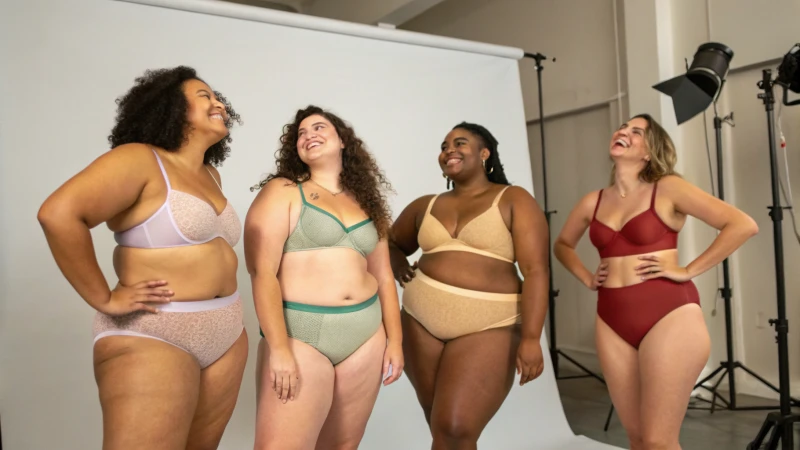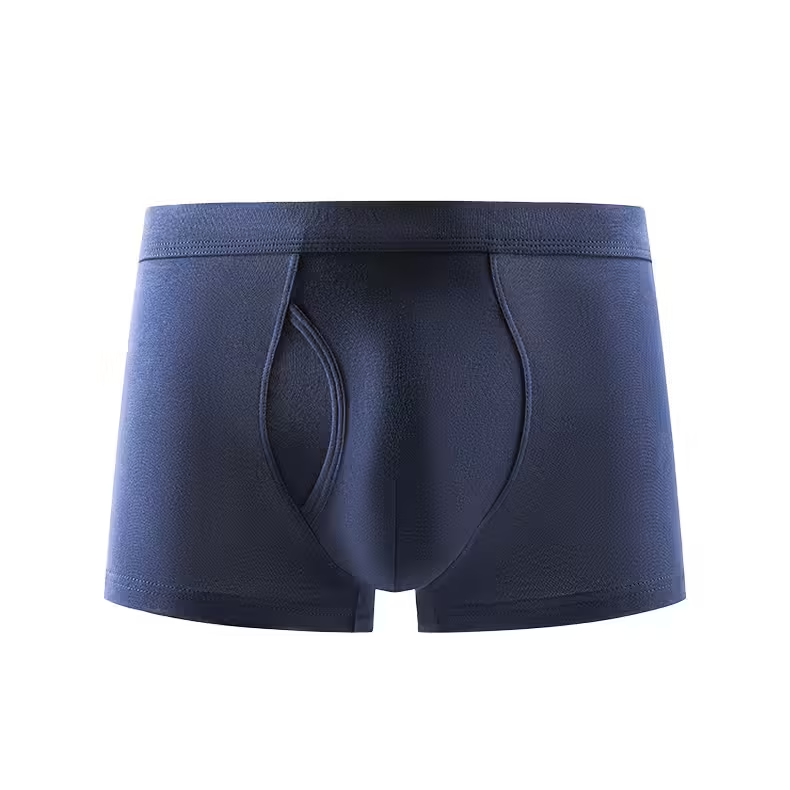
Ever caught yourself staring at that curious hole in men's underwear and thought, "What’s that all about?" Let’s dive into the fascinating world of the fly!
The hole in the front of men's underwear, known as the fly, is designed for convenience, allowing easy access for urination without needing to pull down the waistband. It's especially useful when wearing additional layers of clothing.
But wait! There’s more than meets the eye. Let’s explore the rich history behind this design, its practical uses, and why some modern styles are choosing to go fly-free.
The fly in men's underwear dates back to the 1800s.True
The fly was introduced for convenience and modesty, allowing discreet urination.
What Is the Historical Origin of the Fly in Men's Underwear?
Have you ever stopped to wonder why men's underwear features that curious opening known as the fly? This design element has a historical background worth exploring.
The fly in men's underwear dates back to the 1800s, introduced for convenience and modesty. It allowed men to urinate discreetly without undressing, essential in an era of layered clothing.

A Brief Historical Overview
The introduction of the fly in men's underwear can be traced back to the 19th century. Before this period, men's undergarments were less tailored and did not have specific openings for convenience. As fashion evolved, especially with the advent of more complex outer garments like trousers, the need for an easier way to manage personal needs became apparent.
The Victorian Era Influence
During the Victorian era, modesty and propriety were highly valued. This led to the development of undergarments that allowed men to maintain decorum while attending to natural functions. The fly was a practical solution that supported these social norms by enabling discreet urination without completely disrobing, a significant advantage when wearing layers such as waistcoats and jackets.
Evolution of Design and Functionality
As men's fashion continued to evolve through the 20th century, so did the design of underwear. With more fitted trousers and a growing emphasis on comfort, the fly became a standard feature. However, its design saw various adaptations:
| Era | Design Features |
|---|---|
| Early 1900s | Buttoned flies for secure closure |
| Mid-20th Century | Introduction of zippers in outerwear |
| Late 20th Century | Velcro and other fasteners experimented |
Modern Perspectives on the Fly
In today's world, the necessity of the fly is debated. While some view it as an indispensable feature, others see it as optional or even obsolete, especially with new underwear styles emphasizing fit and support over traditional design elements. Contemporary trends1 are exploring minimalist designs that forgo the fly entirely, offering a sleeker silhouette and greater support.
By understanding the historical context of the fly, we gain insight into its ongoing evolution and role in men's fashion. This knowledge can help you appreciate whether this feature suits your personal needs or preferences.
The fly in men's underwear originated in the 1800s.True
The fly was introduced in the 19th century for convenience and modesty.
Buttoned flies were common in early 1900s underwear.True
Early 20th-century designs featured buttoned flies for secure closure.
Do All Men Use the Fly in Their Underwear?
Have you ever pondered whether all men actually use the fly in their underwear? It's a topic that blends practicality with personal preference.
Not all men use the fly in their underwear; usage varies based on personal comfort and style preferences. Some find it convenient, while others opt to ignore it, choosing instead to lower the waistband entirely.
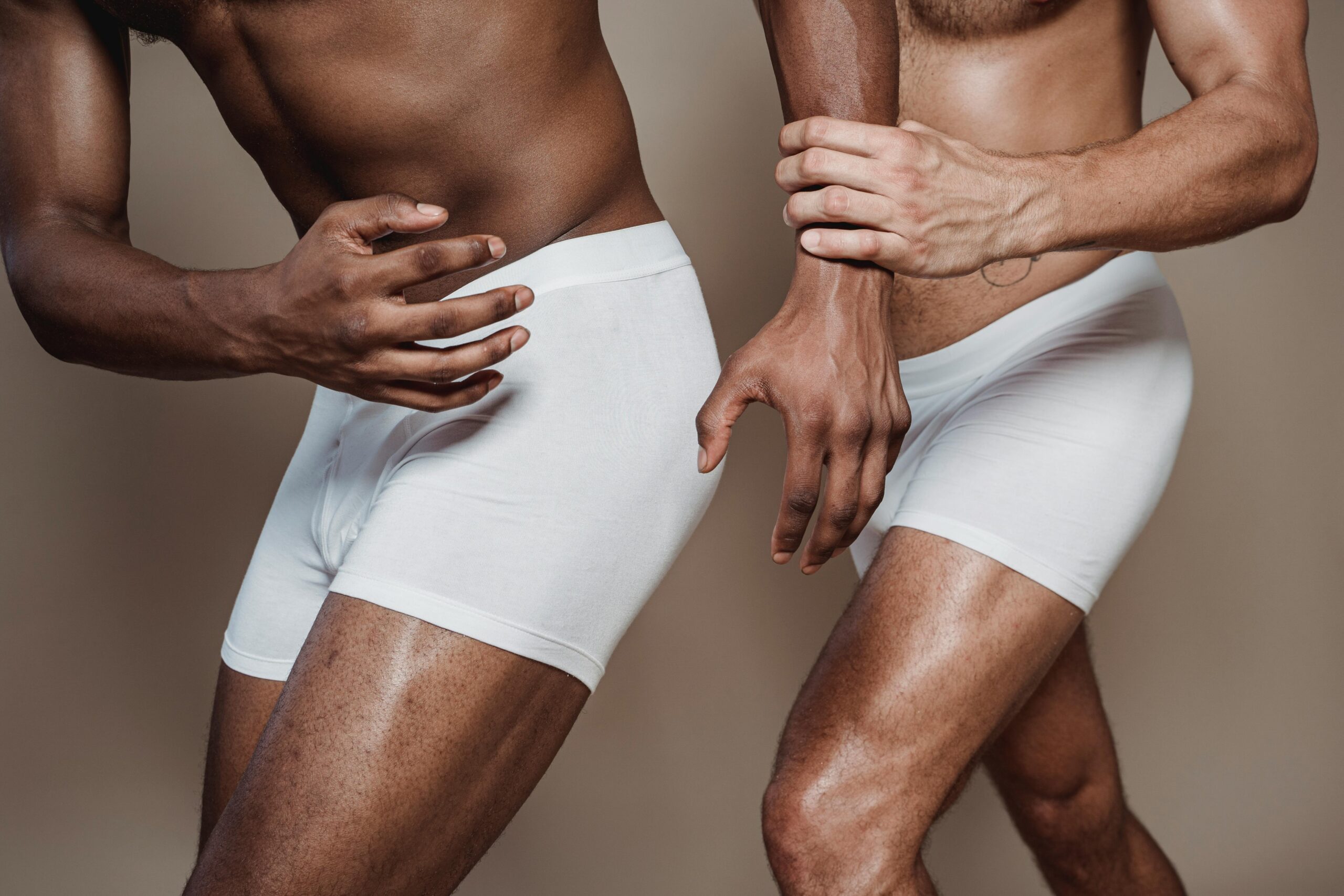
The Purpose of the Fly
The fly is not just a decorative element. Its primary function is to provide a quick and convenient way for men to urinate without needing to pull down their underwear completely. This can be especially handy when multiple layers, like pants or belts, are involved.
However, despite its practical design, not everyone chooses to use it. For some men, the action of unzipping their pants and maneuvering through the fly might be more cumbersome than simply lowering the waistband.
Personal Preference
Men's choice to use or bypass the fly often boils down to personal preference and habit. Those who regularly wear dress pants or are frequently on the go might favor the fly for its expediency. On the other hand, individuals who prioritize comfort or who wear looser clothing might find it easier to ignore the fly altogether.
A survey conducted2 revealed that approximately 60% of men don't consistently use the fly, indicating a substantial number prefer alternative methods.
Fashion Trends and Comfort
In recent years, modern underwear designs have shifted towards comfort and style, sometimes at the expense of traditional features like the fly. Brands are increasingly offering flyless options that boast a sleeker fit and potentially more support. These designs cater to men who prioritize aesthetics and comfort over traditional functionality.
Some might argue that flyless underwear offers a more snug and supportive fit, which can be more comfortable during physical activities or long hours of wear. However, for those accustomed to using the fly, these designs may not appeal.
Cultural Differences
Cultural norms and practices also influence whether men use the fly. In regions where traditional or cultural attire is prevalent, the fly might not be as commonly utilized due to differing clothing layers or fastenings.
Ultimately, whether a man uses the fly in his underwear is a mix of personal preference, practicality, and sometimes even cultural influences. As fashion continues to evolve, so too will the design and functionality of men's underwear.
Most men consistently use the fly in their underwear.False
A survey shows 60% of men don't consistently use the fly.
Flyless underwear designs prioritize comfort over functionality.True
Modern designs focus on aesthetics and comfort, often omitting the fly.
How Do Modern Underwear Designs Address the Fly?
Modern underwear designs are rethinking the traditional fly to offer more comfort, style, and function.
Modern underwear designs often omit the fly for a sleeker look and enhanced support, catering to different preferences and lifestyles.
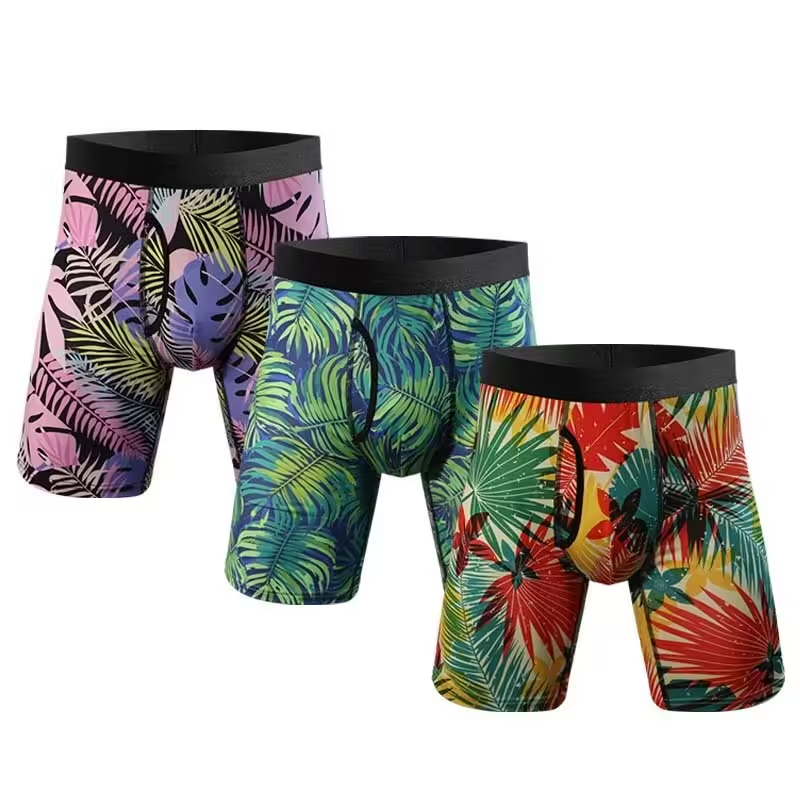
The Evolution of Underwear Design
Traditionally, the fly has been a standard feature in men's underwear, serving as a practical solution for ease of access. However, as fashion trends and consumer preferences have evolved, so too have underwear designs. Modern designers prioritize factors such as comfort and fit3, leading to an increasing number of styles that forego the classic fly altogether. This shift reflects a growing trend towards minimalism and functional design.
Benefits of No-Fly Underwear
Opting for underwear without a fly can offer several benefits. The absence of a fly can enhance the overall fit and support, as the fabric is uninterrupted, providing a smoother front. This can be particularly beneficial for active individuals or those seeking a more streamlined silhouette under clothing. Additionally, removing the fly can reduce production costs and materials, potentially leading to more sustainable practices.
| Design Aspect | Traditional Fly | No-Fly Design |
|---|---|---|
| Convenience | Easy access | May require adjustment |
| Fit | May create gaps | Streamlined |
| Aesthetic | Classic look | Modern, sleek |
Diverse Consumer Preferences
The modern market recognizes that not all consumers require or desire the traditional fly. Many brands now offer both options, allowing individuals to choose based on personal comfort and preference. For some, the choice comes down to aesthetics, while others may prioritize functionality or sustainability.
Technological Advancements in Fabric
Advancements in fabric technology also play a role in modern designs. With materials that offer greater stretch and breathability, designers can craft underwear that conforms more naturally to the body, further reducing the need for a functional fly. Innovative fabrics4 provide comfort and durability, ensuring that whether with or without a fly, underwear meets contemporary standards of wearability.
Modern underwear often omits the fly for a sleek look.True
Many designs prioritize aesthetics and fit, opting for no-fly styles.
Traditional fly designs are more sustainable than no-fly designs.False
No-fly designs can reduce material use, potentially enhancing sustainability.
Is There a Practical Reason for Choosing Underwear Without a Fly?
Discover why some men are opting for underwear without a fly. Is it just a trend or is there real practicality behind it?
Underwear without a fly can offer a more supportive fit, reducing fabric bunching and improving comfort during physical activities. This design is often preferred by men who prioritize comfort over convenience, especially in athletic settings.
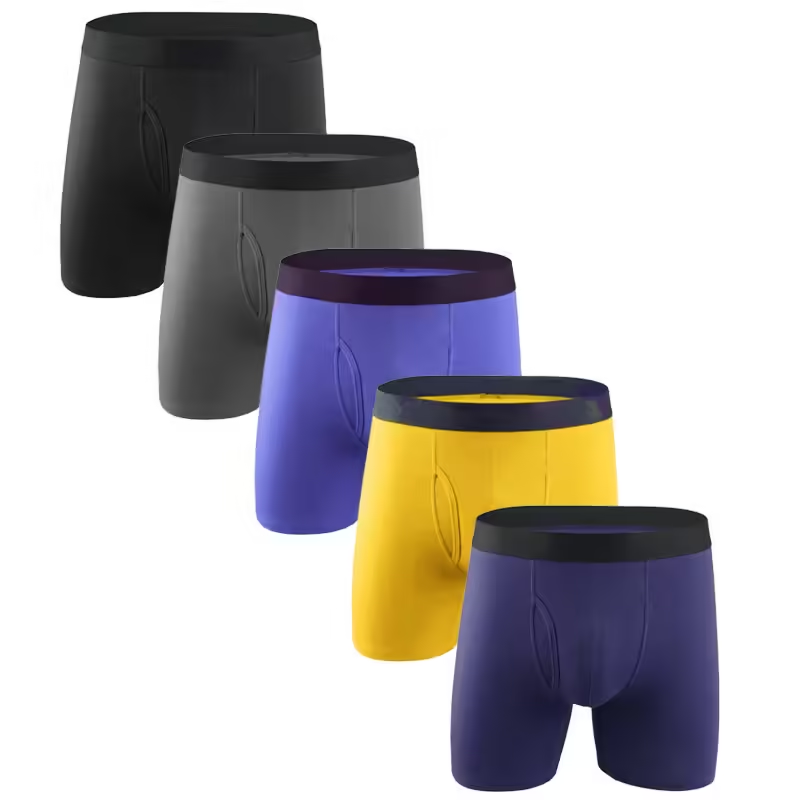
Improved Comfort and Fit
One of the primary reasons men choose underwear without a fly is the enhanced comfort and fit it provides. Without the extra fabric that a fly entails, the garment can offer a smoother, less bulky profile. This reduction in material can minimize bunching, which is particularly beneficial during physical activities such as running or cycling.
Many athletic brands have embraced this design, promoting it as ideal for sports enthusiasts seeking comfort and performance5. In these contexts, ease of access may take a backseat to freedom of movement and support.
Aesthetics and Style
Another reason for choosing flyless underwear is the aesthetic appeal. Without the fly, designers have more flexibility to create sleek and modern silhouettes. This has led to an increase in fashion-forward options that appeal to younger consumers or those looking to update their wardrobe.
By eliminating the fly, underwear can also feature more varied patterns and colors without the interruption of seams or flaps, offering a clean canvas for artistic expression.
Practical Considerations
While some may argue that a fly is indispensable for convenience, others find that its absence poses no significant drawback. For daily wearers who prioritize comfort over quick access, the decision to go flyless can be straightforward.
Moreover, with the rise of smart fabrics and ergonomic designs, flyless options6 often incorporate innovative features such as moisture-wicking materials or specialized support panels, further enhancing practicality.
For many, the choice comes down to personal preference and lifestyle needs rather than a clear-cut practical advantage. Whether it’s for sports, style, or simply comfort, flyless underwear is a testament to evolving fashion and function dynamics.
Flyless underwear offers better support during activities.True
Flyless designs reduce fabric bunching, enhancing comfort and support.
Flyless underwear is less fashionable than traditional designs.False
Flyless designs allow for sleek silhouettes and varied patterns.
Conclusion
Understanding the purpose of the fly in men’s underwear reveals much about our fashion choices. Whether for practicality or personal preference, knowing your options can enhance comfort and style.
Explore how contemporary styles are evolving beyond traditional features.: Currently, patterns like stripes, polka dots, and geometric designs are on-trend. Stripes can add a touch of sophistication to your underwear, ... ↩
Discover survey insights on men's preferences regarding fly usage.: Ever? Sure. Billions of guys, many of whom wear fly-style underwear; some are bound to use it. But I'll tell you a secret: in most cases ... ↩
Discover how modern designs prioritize comfort and fit over traditional styles.: The choice of fabric and fit not only affects physical comfort but also extends to psychological advantages, greatly impacting mood and self-perception. ↩
Learn about advanced fabrics that enhance comfort and durability in underwear.: Innovations in fabric technology have led to the development of moisture-wicking materials that keep you dry and comfortable, even during ... ↩
Learn why athletes prefer flyless designs for enhanced mobility.: The flyless underwear is a contemporary design element, which gives more space, providing a more natural contour, all while retaining the need ... ↩
Discover innovative features in contemporary flyless underwear styles.: For years, underwear has played the role of nothing more than a means to protect oneself against the scratchy seam of pant legs and the biting metal grip of ... ↩




